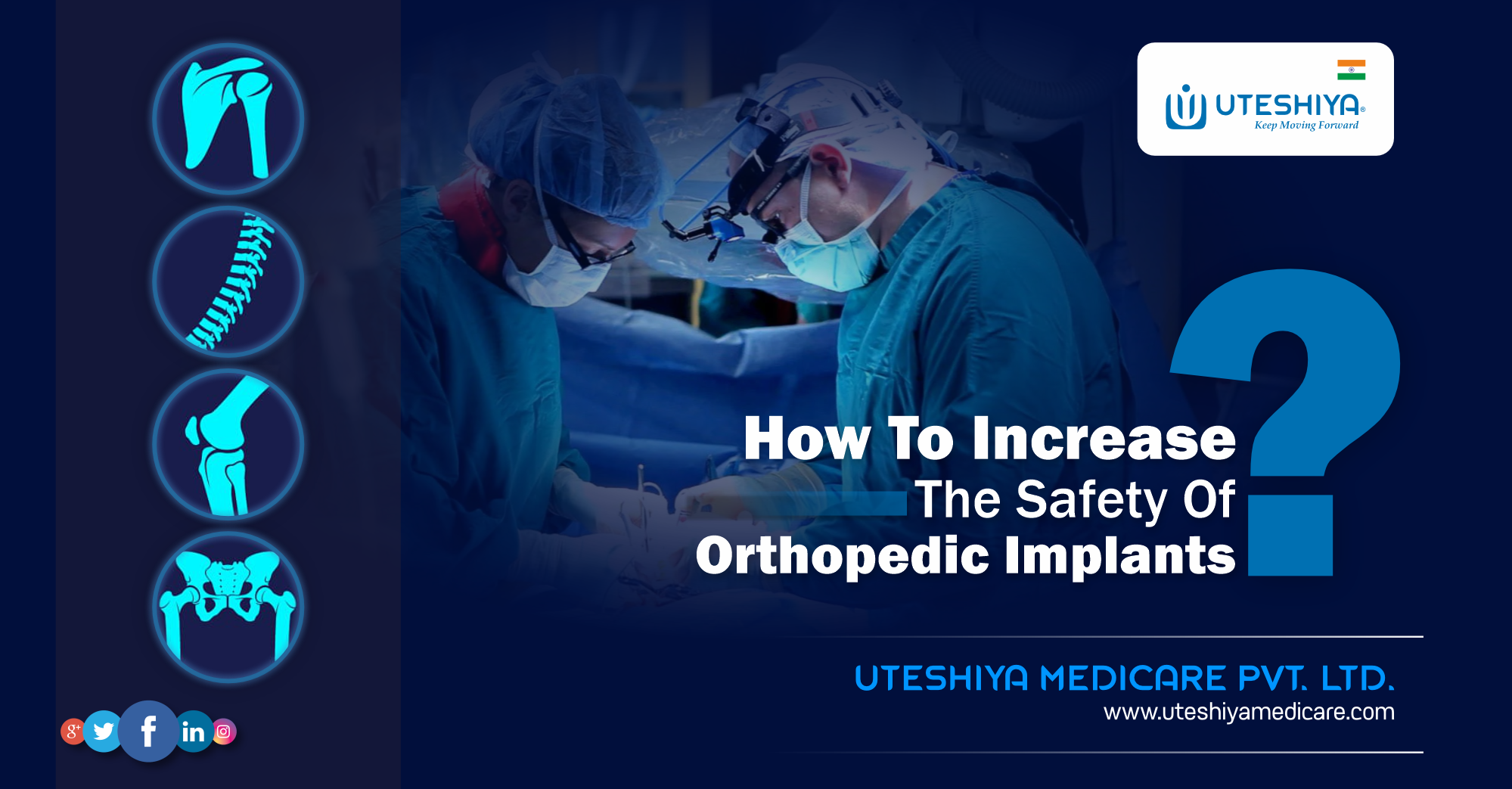 In the field of orthopedic surgery, the use of implants has transformed the treatment of musculoskeletal diseases, providing patients with the potential of increased mobility, decreased pain, and a higher quality of life.
In the field of orthopedic surgery, the use of implants has transformed the treatment of musculoskeletal diseases, providing patients with the potential of increased mobility, decreased pain, and a higher quality of life.
However, the safety and efficacy of orthopedic implants are critical to the success of surgical procedures and patient outcomes. In recent years, advances in materials, design, and surgical procedures have dramatically improved implant safety.
Understanding orthopedic implants
Before getting into safety precautions, it’s essential to understand the principles of orthopedic implants. These devices are intended to replace or support broken joints, bones, and soft tissues. Joint replacements (e.g., hip or knee prostheses), fracture fixation plates, screws, rods, and spinal implants for fusion or stabilization are all examples of joint orthopedic implants.
Factors Affecting Implant Safety
Several factors contribute to the safety and efficacy of orthopedic implants:
Materials Selection
The choice of implant material has a considerable impact on its performance and lifetime. Common materials include stainless steel, titanium alloys, and cobalt-chromium alloys, each with unique strengths, biocompatibility, and corrosion resistance.
Design considerations
Implant design is critical for maximizing biomechanical function while minimizing wear and tear. Implant design, surface polish, and load distribution are all carefully examined to extend implant life and limit the risk of problems.
Surgery Technique
Proper surgical technique is critical for implant success. To reduce the risk of implant-related problems, surgeons must follow exact implantation protocols such as accurate implant location, proper soft tissue management, and meticulous wound closure.
Patient Factors
Patient-specific factors like age, bone quality, activity level, and underlying medical disorders can all have an impact on implant success. A thorough preoperative assessment assists in identifying potential risk factors and tailoring treatment plans accordingly.
Strategies to Improve Orthopedic Implant Safety
Here are several ways and measures for enhancing the safety of orthopedic implants.
Material selection and biocompatibility
The selection of materials for orthopedic implants is critical to assuring their safety and performance. Titanium alloys, stainless steel, and cobalt-chromium alloys are popular biocompatible materials due to their superior mechanical qualities and corrosion resistance.
Biomaterial science advances are constantly looking for novel materials that are more biocompatible and have a lower risk of adverse responses.
Implant Design and Engineering
The design of orthopedic implants has a substantial impact on their longevity, stability, and compatibility with the human body.
Innovative design characteristics like porous constructions for osseointegration, anatomical forms for optimal fit, and modular components for customization help to increase implant safety and functionality.
Computer-aided design (CAD) and additive manufacturing technologies have transformed implant engineering, enabling exact customization and rapid prototyping.
Biomechanical Testing and Validation
Rigorous biomechanical testing is required to confirm the safety and performance of orthopedic implants under different loading circumstances.
In vitro testing, which includes mechanical testing, fatigue analysis, and wear simulations, aids in determining implant durability, stability, and resistance to failure.
Finite element analysis (FEA) and computational modeling approaches provide valuable insights into implant behavior and can help optimize design parameters for increased safety.
Quality Assurance and Regulatory Compliance
Orthopedic implants are manufactured, sterilized, and distributed in accordance with strict quality assurance methods and regulatory criteria.
Compliance with international standards such as ISO 13485, as well as adherence to regulatory requirements established by regulatory agencies, ensures that implants satisfy the highest levels of safety and quality.
Continuous monitoring of manufacturing processes and post-market surveillance improves implant safety by detecting potential difficulties early on.
Surgical Technique and Precision
The surgeon’s proficiency and adherence to standard procedures during implantation have a substantial impact on safety outcomes.
Minimally invasive surgical procedures, image-guided navigation systems, and patient-specific instrumentation improve surgical precision while reducing tissue stress.
Surgeon training programs and continuing education initiatives are aimed at improving surgical skills and establishing uniform protocols to lessen the incidence of surgical complications.
Patient Evaluation and Monitoring
Comprehensive preoperative assessment and patient optimization are required to reduce the risks associated with orthopedic surgery. Patient characteristics such as age, comorbidities, bone quality, and lifestyle choices all influence implant selection and surgical strategy.
Postoperative monitoring and rehabilitation programs make it easier to spot issues early on, intervene quickly, and improve functional outcomes.
Long-term follow-up and surveillance
Long-term follow-up and surveillance are critical for monitoring the performance and safety of orthopedic implants over time.
Patient registries, clinical outcome studies, and monitoring programs allow for the collection of real-world data on implant performance, survival, and adverse events.
Early detection of implant-related problems and revision operations adds to ongoing development in implant design and patient care.
Ethical Considerations for Orthopedic Implant Safety
Informed consent
It is critical to ensure that patients understand the dangers and benefits of orthopedic implants. Before performing implant surgery, healthcare providers must seek informed permission from patients, which includes describing potential problems and alternative treatment alternatives.
Transparency and accountability
Healthcare practitioners and manufacturers must be upfront about implant safety data and outcomes. Open communication, reporting of adverse events, and accountability for product performance all help to sustain trust and confidence in orthopedic implant technology.
Wrapping It Up
Improving the safety of orthopedic implants necessitates a diverse strategy that includes material research, design innovation, surgical skills, patient-centered care, regulatory oversight, multidisciplinary collaboration, and ethical considerations. By utilizing technological breakthroughs, encouraging stakeholder engagement, and prioritizing patient safety and transparency, we may improve implant safety and efficacy, thereby enhancing patient outcomes and quality of life.
As the field of orthopedics evolves, continued research, innovation, and ethical practice will be critical for tackling new difficulties and improving the safety and efficacy of orthopedic implants.

